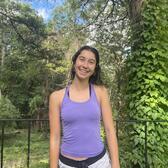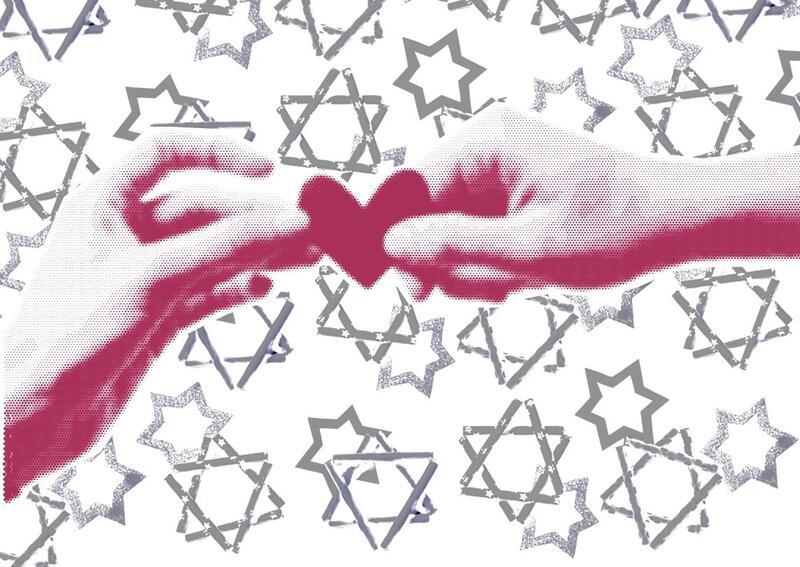Three Shabbats and My Multi-Denominational Upbringing
When I lived in China for the first thirteen years of my life, Shabbats rotated for me on a carousel. Every three weeks the cycle would repeat, and my family would alternate between three locations: our cozy at-home shabbat dinners, the Israeli tourist-filled Shabbat at Chabad, and the musical Kabbalat Shabbat at our egalitarian minyan. As a kid, I preferred the Shabbats we spent outside our home because both the Chabad house and the egalitarian community had magnificent playgrounds with ball pits, slides, wooden plank bridges, and swings. It's obvious that I was not going to shul for the purpose of going to shul—I was there for the playground! When I was not busy pelting balls at my sister or playing hide and seek with my friend Sophia, I would go and join the adults. I quickly observed that at each Shabbat location my family observed different minhagim (Jewish customs).
At home, we observed mitzvot according to the Conservative movement. The setting was more intimate, and my parents customized services to keep me and my siblings engaged. We would sing songs like “Mi Ohev At Hashabbat.” As I grew older, my aba would quiz me on my Jewish knowledge, asking me about the protagonist of the Purim story or about God’s appearance in the burning bush in Parshat Shemot. Customs such as candle lighting were reserved for women, while Kiddush was reserved for my dad. Only my dad and my brother wore kippot, but everyone shared equal responsibility for preparing dinner. All the food was kosher but, because we are a family who likes dessert, we would only wait an hour before eating our milchig treat (Many Orthodox Jews wait six hours.)
At Chabad, the zemirot (songs sung after Shabbat dinner) filled the air, mixing with the aroma of cholent. I sat with my ima on the right side of the synagogue, separated from my aba through a carefully engraved wooden panel. The walls were flanked with siddurim (Jewish prayer books) and chumashim (printed torah in the form of a book) with an array of red and blue leather backs. The women who were concerned about the laws of tznius had a basket of shawls to pick from. All the men draped themselves in their tallit. The stairway from the first floor to the second was guarded by a larger-than-life painting of The Lubavitcher Rebbe Z"L wisely looking down on all the kids running up and down the stairwell. Between the appetizers and the entrée, the Rabbi would deliver his d’var. Dinner was always followed by reciting Birkat Hamazon, the prayer after meals.
In our lay-led, egalitarian community, I was exposed to new ideas and people. Every Shabbat, a different group of people would coalesce to read prayers in English and Hebrew. We didn’t have a rabbi; services were led by different people every week. At the end of the services, different members of the community delivered announcements about upcoming social events. The post-service meal was not kosher, which made meal options limited. Every year, the whole community would put on a Purim spiel, telling the story according to current events. For example, during Trump’s election in 2016, I took on the role of Haman, who in this rendition was Kellyanne Conway.
I felt at home in all three of these communities. The exposure I had to Orthodox Judaism at Chabad, Conservative Judaism at home, and Reform Judaism in my lay-led egalitarian community allowed me to pick and choose what I liked from each. I liked Chabad’s traditions and that I could count on the same rabbi and the same prayers from week to week. In my lay-led community, I valued being treated as an equal to the adults. At home, it was comforting knowing that I could come out to the living room in my PJ’s, and we would still have an amazing Shabbat dinner.
It was not until I came back to America in seventh grade that I realized my upbringing was an anomaly. Most children at my local Jewish day school were surprised that I went to a Conservative summer camp and both Orthodox and Reform synagogues. Most kids had been involved in one synagogue their whole life and could not fathom the idea of belonging to three denominations. I felt bad that they were separated into factions and were missing out on a more diverse Jewish experience.
In high school, I saw an even uglier side to Jewish factionalism when I invited the Jewish student group and faculty to the local Chabad house to celebrate both Shabbat and Simchat Torah. As we gathered in the synagogue, the rabbi instructed all the men to join him in the tradition of the hakafot. On our ride back, the boys who participated remarked on how exciting it was to be immediately included in a community that they had not known prior. The teacher gave them a dismissive look and stated how she saw Chabad’s practices as being sexist and outdated. Her comments about a community that I have been a part of since I was a child deeply hurt me. I hoped she would try to find commonalities between herself and the Chabad family. Instead, she frowned on them and dismissed their version of Judaism as antiquated.
The advice that I give to all Jews as a member of three distinctly different communities is: instead of siloing ourselves into a box, we need to break down those barriers and reach out to one another. Especially now, after the horrors of October 7, the Jewish community needs to come together and accept people from different denominations. Maybe we pray different amounts, maybe we don’t abide by the same laws of kashrut, and maybe we don’t even speak the same language. However, we are all still Jewish.
Jews only account for 0.2% of the world population, yet we receive so much hate. So why exacerbate that hate by creating more barriers between us? Shouldn’t that make us feel a greater need to rely on each other? Jews of different denominations must not view each other as foreign or unapproachable, but rather as allies in the same fight for the existence of Judaism.
This piece was written as part of JWA’s Rising Voices Fellowship.







